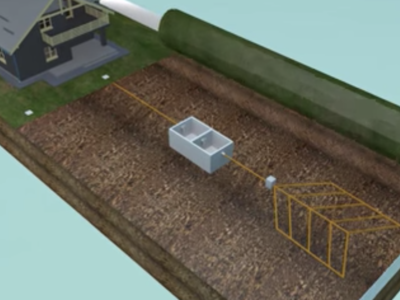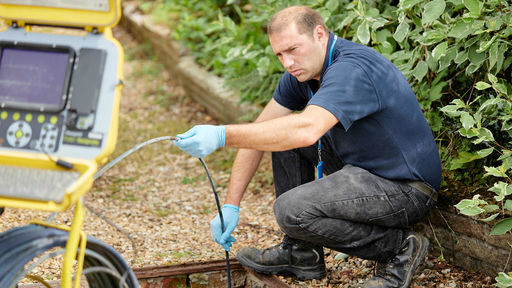Septic tank in clay soil? Find out why it matters and what you can do

A property owner recently contacted us through our website, explaining that they had a septic tank in clay soil and asking us if this might be the cause of their septic tank problems.
Here at UKDP we spend every day talking about septic tanks and other off-mains drainage systems (and yes, we are as interesting as we sound), so we know all about different types of soil and why they may or may not be appropriate for different types of drainage systems. We also know all about the rules and regulations that set down what you can and can't do when it comes to drainage systems and types of soil.
Don't worry, there's no need for you to become an expert, I'll explain it all here for you to save you the bother. If any of it doesn't make sense, or if you'd like any more information, just get in touch with our friendly team who'd be very happy to talk septic tanks with you.
Why does it matter if you have a septic tank in clay soil?
Firstly, it's useful to know how a septic tank works. I'll go into the basics here, but if you'd like to know more detail you can check out our guide and video.
Septic tanks don't really perform much in the way of treatment for the waste from you property's toilets and sinks. Really, they just provide a separation of the waste that goes in, into three layers (it's worth not dwelling on what that might look like if you're eating your lunch). The middle layer of separated waste water is what leaves the tank, the rest is retained inside it and it's this which gets removed during your regular septic tank empty. The waste water heads out of the tank through the outlet pipe and on to one of the following:
A soakaway system or drainage field
Typically, this is a system of slotted or perforated pipes which provides some treatment of the waste water, as it enables it to pass safely through the particles of the sub soils. The waste water is able to pass into the ground without causing any pollution (assuming of course that the soakaway system or drainage field is working as it should be). Sometimes your septic tank might discharge straight to a soakaway pit, which works on the same principles as the slotted or perforated pipework.
A sealed pipe which runs straight to a local watercourse or a ditch
Please be aware that as of January 1st 2020, you will no longer be able to have the waste water from a septic tank going straight to a watercourse or ditch. You can read more about the legislation change and what it means in our Guide. The reason for the change is because it is no longer considered that the waste water is clean enough to pass straight into watercourses without having been treated (as it would be if it passed through a soakaway system).
So why is it relevant if you have a septic tank in clay soil?
Assuming that your septic tank goes to a soakaway system, the problem is that it will only function properly in certain types of soil. It's all to do with the tiny gaps between the particles in the sub soils, through which the waste water passes.
The long and short of it is that if the gaps between the particles are too small (or there are no gaps at all), the waste water can't pass through. Clay soil is the main culprit here, as it stops the waste water from passing through and being treated as it needs to be. This can cause some serious soakaway problems.
What are your options if you have a septic tank in clay soil?
Unless you have another area within your property's boundary which does not have clay soil, then a soakaway system or drainage field is unlikely to work. The way to determine the type of soil and how porous it would be is through a percolation test. If you're unsure, then this is a good place to start as it will tell you whether any area of the ground at your property is suitable - and if so, what size and design of soakaway system might be needed.
If a percolation test shows that the ground at your property is not suitable for a soakaway system, then the second option is to replace your septic tank with a sewage treatment plant. A sewage treatment plant produces a better quality of waste water, which gives you more options about where the waste water leaving the plant can go. For example, you could discharge the waste water straight to a local watercourse, alternatively you could install a deep ring soakaway chamber or a borehole soakaway (subject to Environment Agency approval).
In summary, having a septic tank in clay soil can be a challenge, but there are always options.
Let's stay in touch! Sign up for our helpful newsletter today

Sam's career prior to UKDP was spent in the marketing and service industries, so she is focused on making sure we look after our customers – and getting the UKDP message out there! Sam has overall responsibility for business operations and for delivering the best customer service we can.



